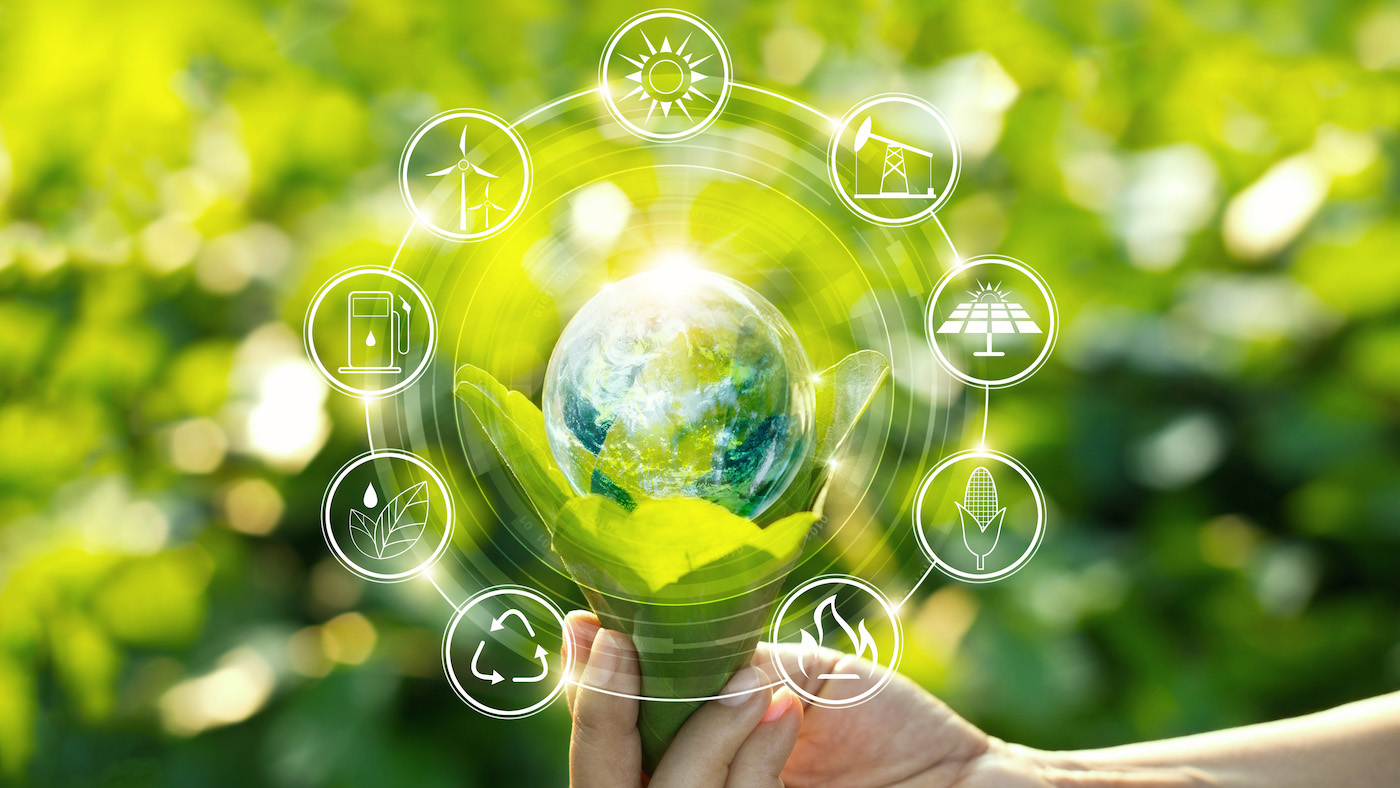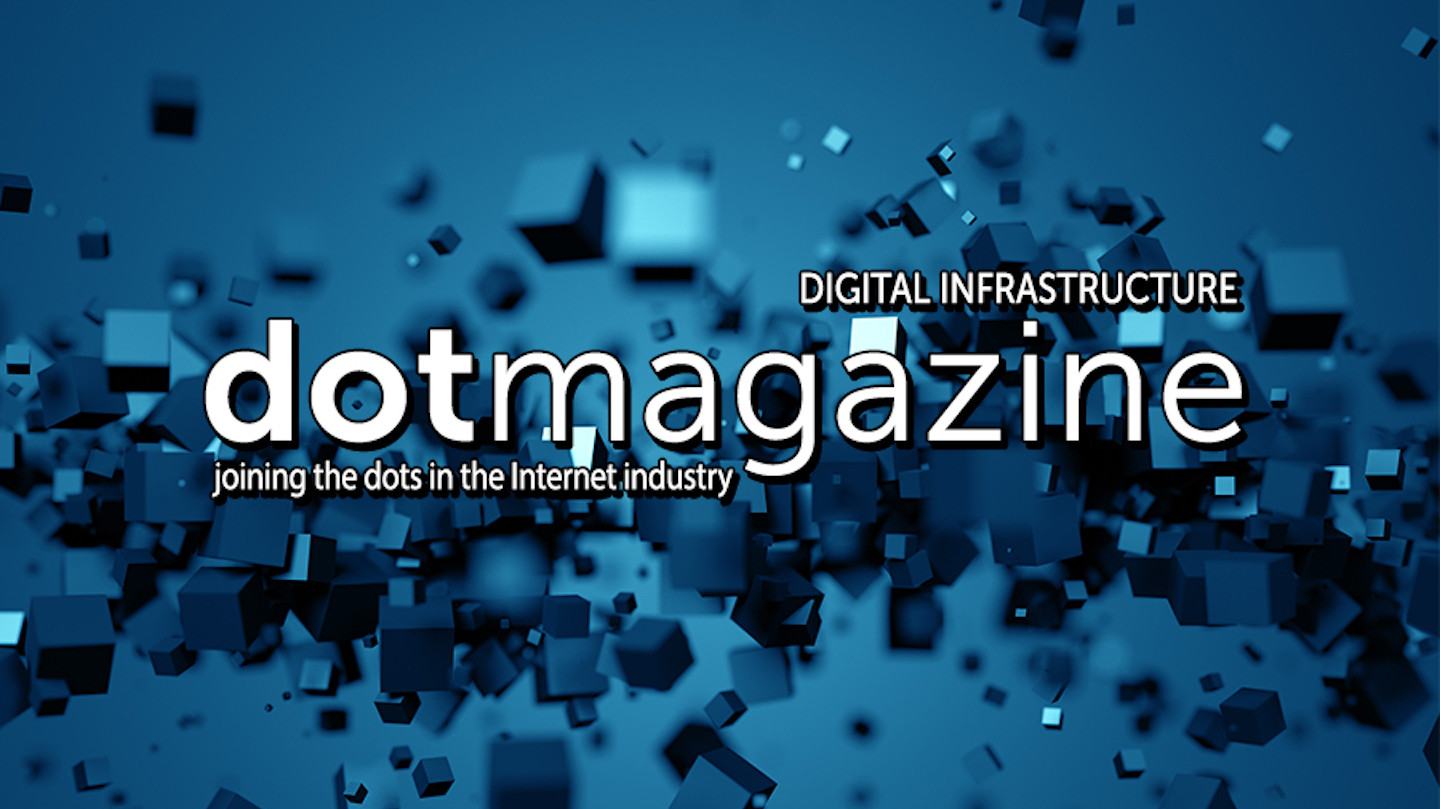Data Centers in a Changing World
Dr. Béla Waldhauser from Telehouse & the Alliance for the Strengthening of Digital Infrastructures on the energy consumption and energy-saving potential of data centers and digitalization.

© Petmal | istockphoto.com
Covid-19 & the Climate Potential of Digital Infrastructure
Over the past few months in the digital infrastructure industry, we’ve seen headlines about the increase in traffic, the increased use of video-conferencing and gaming, and so forth. But when we talk about this development from the perspective of the data center business, and especially colocation, this is not the kind of impact that I am able to observe. I don't see whether there is more data being processed or not, or whether there’s more traffic through the lines. The only thing I can talk about is whether there is more activity on site: Is there more power consumption in my data centers?
Power consumption is really a defining factor for data centers. Data center operators across Europe are doing their best to minimize consumption as much as possible – as can be seen in the new study from eco and the Alliance for the Strengthening of Digital Infrastructures in Germany – but that doesn’t mean our need for power is reducing; it just means that we are able to do more with it. Because there is a constantly growing demand for data center capacity.
Covid-19 as a catalyst for digitalization
Back when the coronavirus pandemic started, a lot of people told me that I was in a very good situation: All data center customers would need more and more capacities. I was aware, however, that this would not play out in practice immediately, because companies were fully occupied with getting their employees set up to work from home, and dealing with business continuity. All the IT departments were fully occupied with maintaining business as usual, and doing so as smoothly as possible. They did not have any time to take care of planning for additional space and power in the data center – because it’s not just about booking a space, it’s about the layout, the set-up, getting the hardware, doing the configuration, the design, installing the components. It’s a long-term process for many of my customers. As a result, I didn’t experience a sudden jump in customer capacity from that perspective. Rather, I’m waiting for a time where normality begins to return and people have more time to think about how to go forward.
What I did see, though, was that Covid-19 has acted as a catalyst for projects that were already in the planning stage. For example, in 2019 we were in contact with some of our existing customers who needed more space and power. And guess what? Two American companies – both in the gaming industry – signed up for two nice big deals on the spot, come lockdown. We had been in discussions for quite a long time, and without the coronavirus, we would potentially still be in discussions. From my point of view, this is a short-term impact for specific industries where you have that steep increase of customer activity.
Preparing for the next wave
The truth is, if this coronavirus pandemic had occurred 20 years ago – even ten years ago – it would have been very different – frankly, it would have been a disaster, because we simply didn’t have the capabilities for working from home or doing virtual school lessons. The first smartphone, the iPhone, was introduced in 2007. AWS started the cloud business in 2007. Without all of the technological capabilities that have emerged in the last couple of decades, what we have experienced this year would not have been possible. In a way we are “lucky” that this pandemic has happened now, and not a decade ago. We’ve got more potential to overcome the economic penalties now than we did then.
And suddenly, out of the blue, everybody understands how important digital infrastructures are. Looking back to the early days of the Alliance for the Strengthening of Digital Infrastructures, which we founded two and a half years ago, it was a significant challenge to make people understand the importance of digital infrastructure – regardless of whether we were talking about data centers, broadband, or Internet Exchanges. Today, you don’t need to explain that anymore. Now, everybody knows it.
Data centers and energy consumption
We have seen a real change in the public perception of digital infrastructure, especially data centers. It used to be that data centers were condemned as gas guzzlers, but now we are gaining some balance in the discourse.
To put the record straight, yes, data centers do consume a lot of energy – and that is, put in simple terms, because nearly everyone has a smartphone. When I try to explain my work to people with little understanding of digital infrastructure, the smartphone is my favorite example. If you ask people whether they are in the cloud, many probably can’t tell you. But if you ask them what apps they are using on their smartphone, and then point out that each of those apps is actually running on a server in a data center somewhere, that gets the message across more effectively. Pointing out that the pictures they took on their last holiday and sent home to friends and relatives will go, at a minimum, through at least five or six data centers, it illustrates where data centers fit into the digital value chain.
Almost everything you do today requires a data center. And with more and more activity with these smartphones – not only private, but also in the business context – then obviously there's more capacity needed in a data center. And in turn, there is more energy needed to support that.
Efficiency versus growing demand
The amount of energy required for each act of processing – each photo, each button-click, each app – has been reducing constantly. Moore’s Law, which was established in the 60s, was only meant to be applicable for the number of transistors on integrated circuits. However it seems now also to be valid for nearly every new infrastructure – whether we’re talking about servers, storage units, and so on – has greater productivity in relation to its power consumption. And this has proven to be true time and again, as the recent eco/Alliance study into data center energy consumption in Europe illustrates clearly. However, this does not mean that, overall, less energy is being consumed by data centers, because the increase in capacity requested from all kinds of customers, business or private, is increasing at an even greater rate.
Supply feeding demand in digital infrastructure
The rollout of 5G will give us a tremendous increase in broadband capacity, which will further drive demand for digital services. Comparing digital infrastructure with other forms of infrastructure, there is a clear difference in uptake. If you double the number of highways in a country, that does not mean that the number of cars being sold will also double. However, if you double the broadband capacity, that capacity will be used very rapidly. As soon as there is greater broadband availability, fancier apps emerge, higher-quality video streaming becomes possible, and the demand for that capacity grows accordingly. Now we have 4K, and also 8K, then we’ll have 16K or more in the future. The resolution of modern games is fantastic, for example.
And this is only the beginning. Even without the catalytic impact of Corona, we would be at the starting gates of digitalization. And all of this will lead to greater demand for capacity in data centers.
Sustainability potential of digitalization – the flip-side of data center energy consumption
At the same time, there is another side to digitalization, and that is the potential it offers for sustainability gains in terms of energy consumption and CO2 emissions. Discussions we have recently been having with the German Ministry for the Environment revolve around undertaking scientific research in order to understand in greater depth what the eco-balance of digitalization could be. But even without that research, we have already seen an impact this year. We have the first-hand evidence that working from home offers significant sustainability advantages over commuting and travelling for business. As a result of the Corona lockdown in Germany, the CO2 emissions reduced dramatically – and did so despite the increase in activity in data centers and Internet Exchanges. This demonstrates how much we can save by using digital infrastructure.
Practical steps to improve the energy consumption of digitalization
But to further improve the eco-balance of digitalization, there are a few changes I think we still need.
- Firstly, we are still in a situation where an idle server – which is doing more or less nothing – consumes too much power. This pattern has certainly improved, but I would like to see a very minimal power consumption if that server is idle, which is not yet the case. This is a call to the manufacturers of IT hardware.
- My next call is to the users of servers. I’m quite sure the virtualization ratio can be improved. Cloud is one good example where you have high virtualization, because for companies like Google, AWS, etc., the data center is a data factory, so they try to keep the costs as low as possible. That means they have a high virtualization ratio, which means more output for the same power consumption.
- The next one is that most data centers are still using air to cool the servers, and air is not the best medium to transfer heat. A much better medium would be liquid – that could be water, or any other liquid. The reason is that the possibility to transfer the heat is much higher for liquid than for air. And there are designs for racks and cabinets where we have the water in the rack to cool all the servers, which is more efficient than using air. Unfortunately, here you have a high one-time cost because the system is much more expensive.
But I would like to see the developments go one step further. And, here, I’d like to mention the topic of heat recovery. Because actually, the waste heat from air cooling has a temperature of max. 30 degrees Celsius, which is not enough by a long way to be used for anything else outside of the data center campus. If you go one step further – not liquid-cooled racks, but liquid-cooled servers – then first of all, it brings the liquid right up to the source of the heat inside the server, which is the most effective way to cool. And second, the waste heat produced in this way has a temperature of 60 plus degrees, which can easily be used for district heating to heat office buildings and flats, or any other space requiring heating.
If we talk about the energy-hungry data centers, if we talk about the increase in digitalization, and much more digital infrastructure to come online, if we’re talking about sustainability: then these are steps we need to take. This would allow data centers to contribute even more to the sustainability benefits of digitalization.
Theoretical physicist Dr. Béla Waldhauser is Chief Executive Officer of Telehouse Deutschland GmbH and KDDI Deutschland GmbH. Previously he was responsible for the German operations of Global Switch, and prior to that TeleCity. Before this, he was Managing Director for Germany and Austria for Teleglobe. For several years, he has been Leader of the eco Competence Group "Data Center Infrastructure" and since 2011 Member of the Jury for the "German Data Center Prize" in conjunction with the annual "Future Thinking" congress. In 2014, he was invited by the German Federal Ministry of Education and Research, as an expert and as a member of the eco Association, to actively participate in establishing the new strategy platform for “ITC in Horizon 2020”. Dr. Waldhauser is also Spokesperson for the Alliance for Strengthening Digital Infrastructures in Germany, set up in early 2018 under the umbrella of eco to support Germany's development as a digital location.







